
Senatskaya Square is one of the main squares of St. Petersburg, located in the heart of the city.
Along with the other two squares: Palace and St. Isaac's Square, - Senatskaya Square traditionally belongs to the architectural ensemble of the central historical squares of the city.
Senatskaya Square is one of the oldest squares in St. Petersburg. Its formation began together with the city, at the time when the Admiralty Shipyard was laid-the beginning of the 18th century. Then on the site of today's square was the glacis of the Admiralty, which was a small fortress structure.
Later, when the fortress lost its original significance, the ensemble of modern St. Petersburg began to emerge around it.
On the square, near the banks of the river, in the 18th century, the first small St. Isaac's Church was erected, which had a temporary character and was located in a rebuilt wooden barn. In this church, on February 12, 1712, Peter I and Ekaterina Alekseevna were married. Then, on the site of the wooden one, a stone church was laid, but, due to the loose river bank (soil sediment), it began to collapse, and in 1763 it was dismantled.
From the south, the future area was bounded by the Admiralty Canal, dug in 1717 for the rafting of logs to the shipyard. The canal connected the Admiralty and the island of New Holland. It lasted until 1844, when it was enclosed in a pipe and filled in, and in its place was arranged Konnogvardeysky Boulevard.
Today, the Senate Square is a popular place for walking in the city center.
In a modern appearance, this spacious and wide square combines a park area and some of the main attractions of St. Petersburg.
On the north side, the Senate Square is opened to the Neva River (Admiralteiskaya Embankment).
The center of the square is decorated with the "Bronze Horseman" - an equestrian statue of Peter I, which was created at the initiative of Catherine II by the French sculptor Etienne Maurice Falcone.
The grand opening of the monument took place on August 7 (August 18, new style), 1782.
The monument is set on a large pedestal-monolith - "Thunder-stone" and is made of bronze. It is a sculptural composition, which depicts Peter I, sitting on a rearing horse. Learn more about the Bronze Horseman…

On the east and south sides, the Senate Square fits in and is visually part of Alexander Garden, which, in turn, is a shady place for walking and recreation.
The creation of the garden was entrusted to the St. Petersburg botanist E. L. Regel. The garden was opened in 1874 and named after the Emperor Alexander II.
In the garden there are places for recreation, alleys for walking, a children's playground, flower beds, lawns, several monuments and a fountain. Learn more about the Alexander Garden…

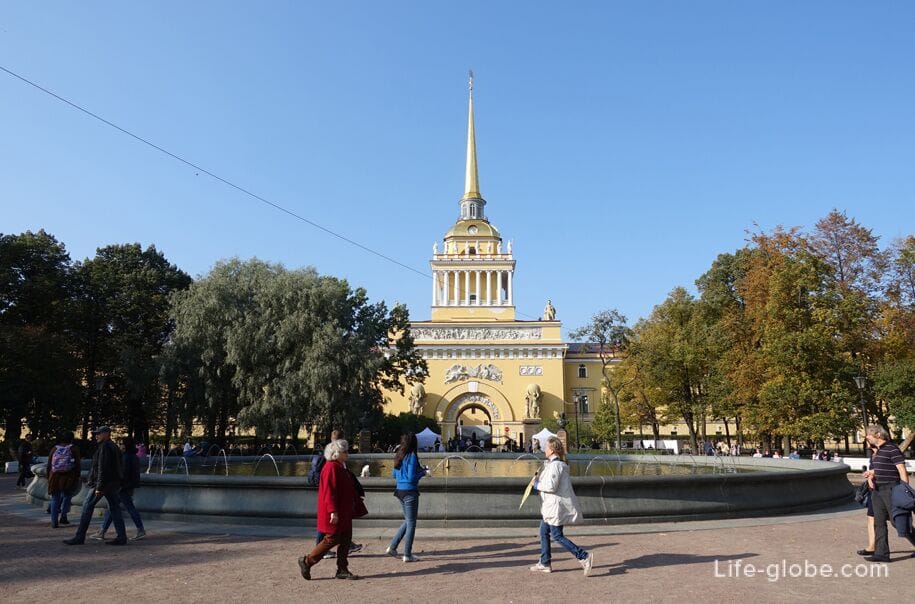
To the south, beyond the Alexander Garden, across Admiralteiskiy Prospekt, stands the monumental and majestic St. Isaac's Cathedral.
The current St. Isaac's Cathedral is the fourth in the history of St. Petersburg (the first three have not been preserved). The cathedral was built from 1818 to 1858 by the French-born architect Auguste Montferrand.
The cathedral is designed in the style of late classicism and is an Orthodox church, also has the status of a museum. Services and concerts are held in the cathedral. Read more about St. Isaac's Cathedral…
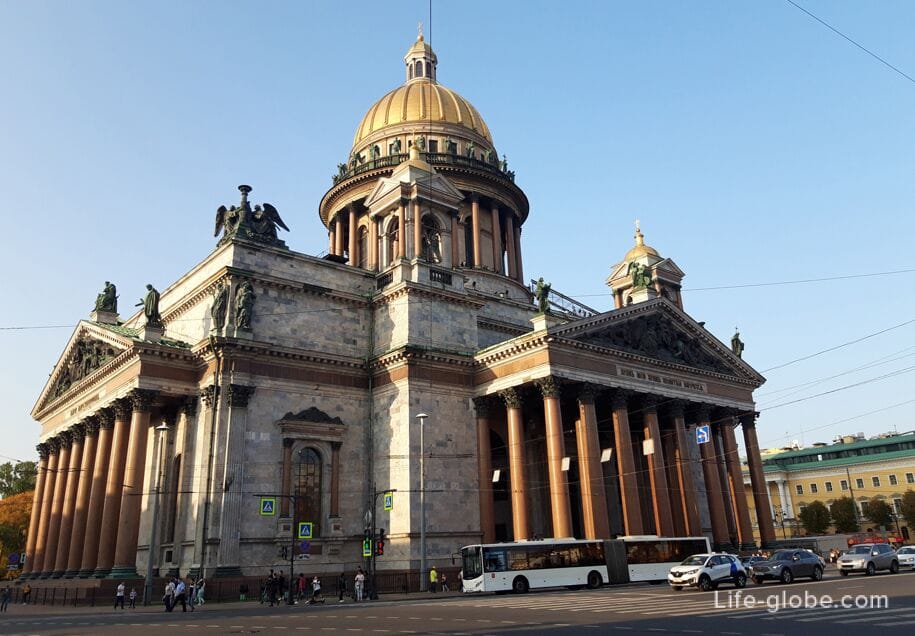
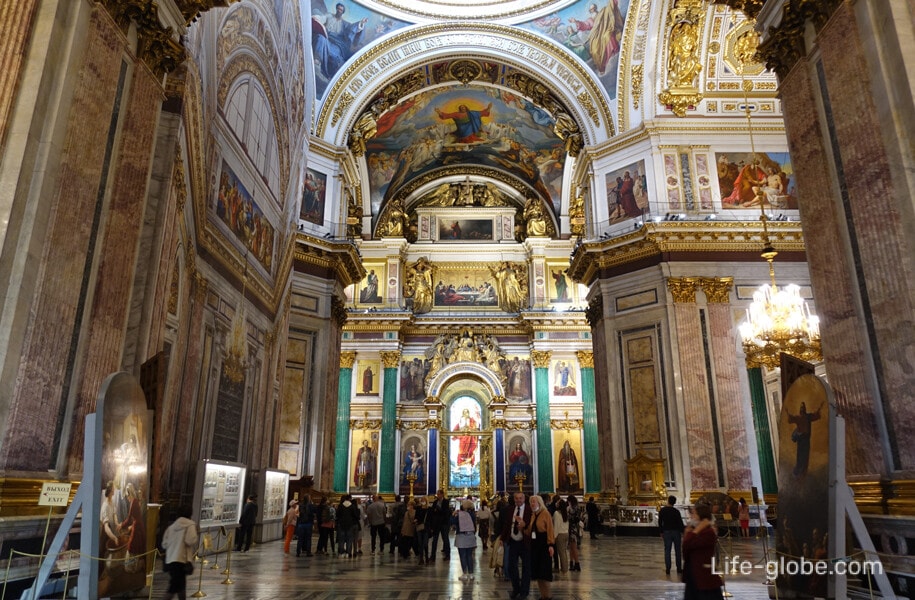
At a height of 43 meters, around the drum of the dome of St. Isaac's Cathedral, there is a colonnade consisting of 24 massive columns.
In the drum there are 12 giant windows, and in the open part of the colonnade there is a circular observation deck, giving beautiful 360-degree panoramic views of St. Petersburg, including the historical center, the Neva River and partly on the Senate Square. Learn more about the colonnade and observation deck…
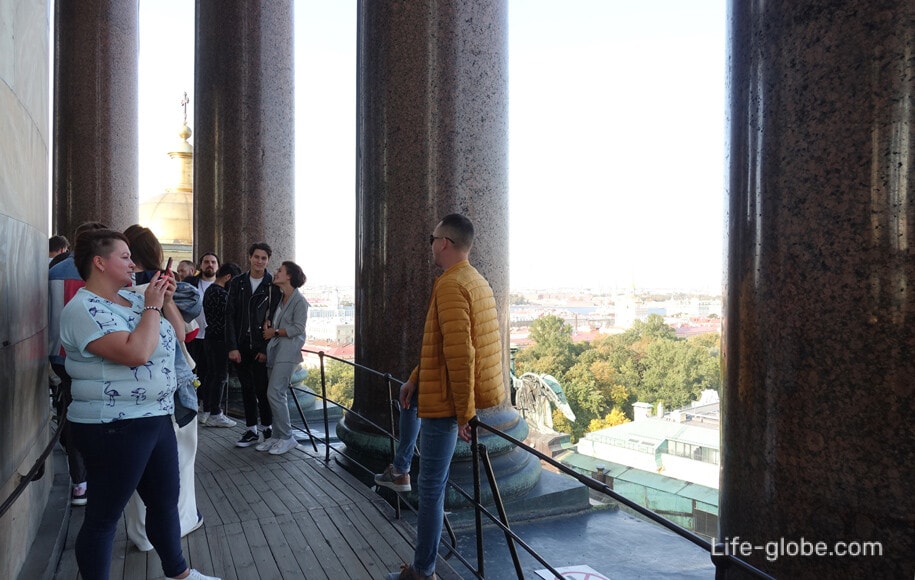
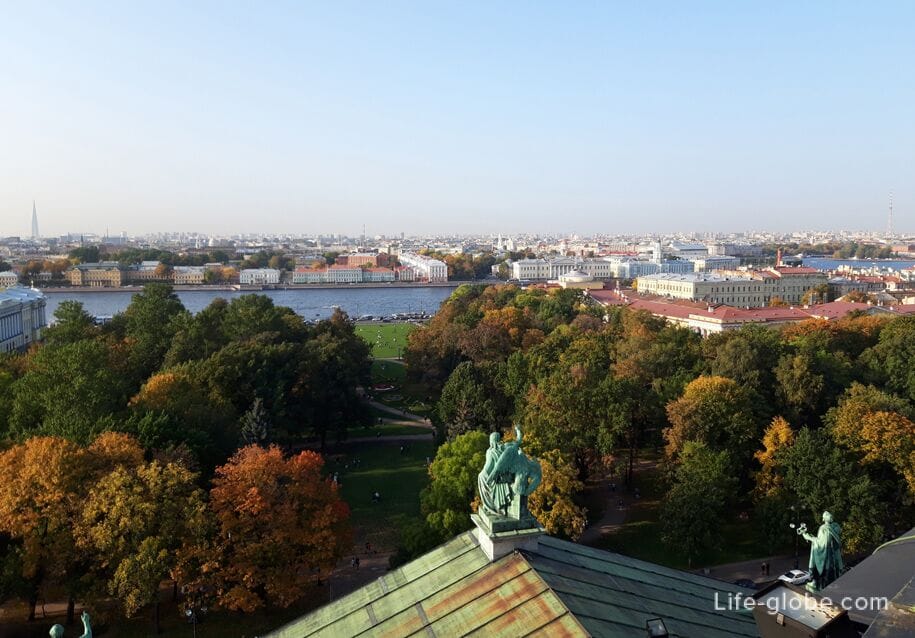
To the east, behind the Alexander Garden, across the Admiralty Passage, is the same building of the Admiralty, from the history of which the entire surrounding space, including the Senate Square, originates.
Today, the Admiralty building is a landmark and one of the symbols of St. Petersburg.
The complex consists of two U-shaped buildings - external and internal.
The main one is the southern facade of the Admiralty, facing the Alexander Garden. Read more about the Admiralty building…
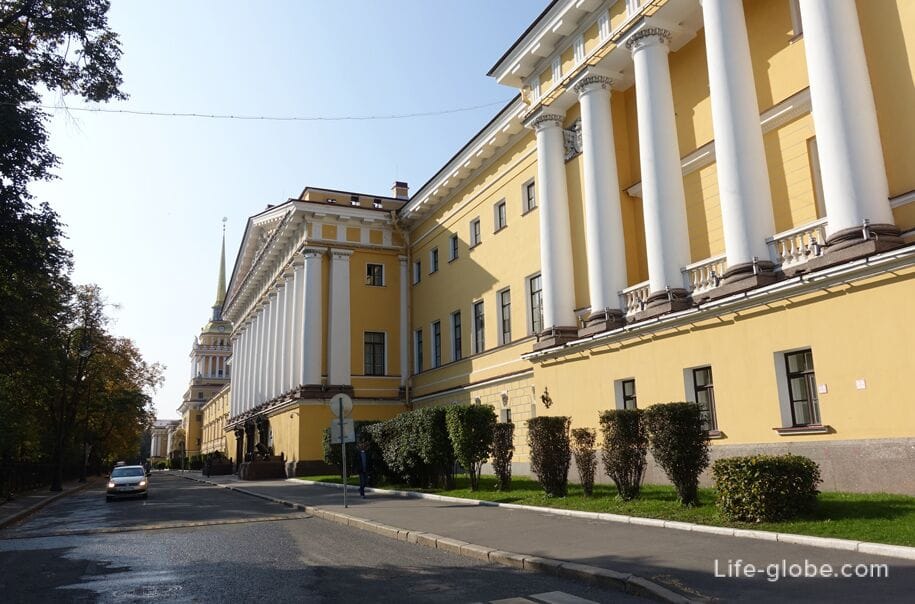
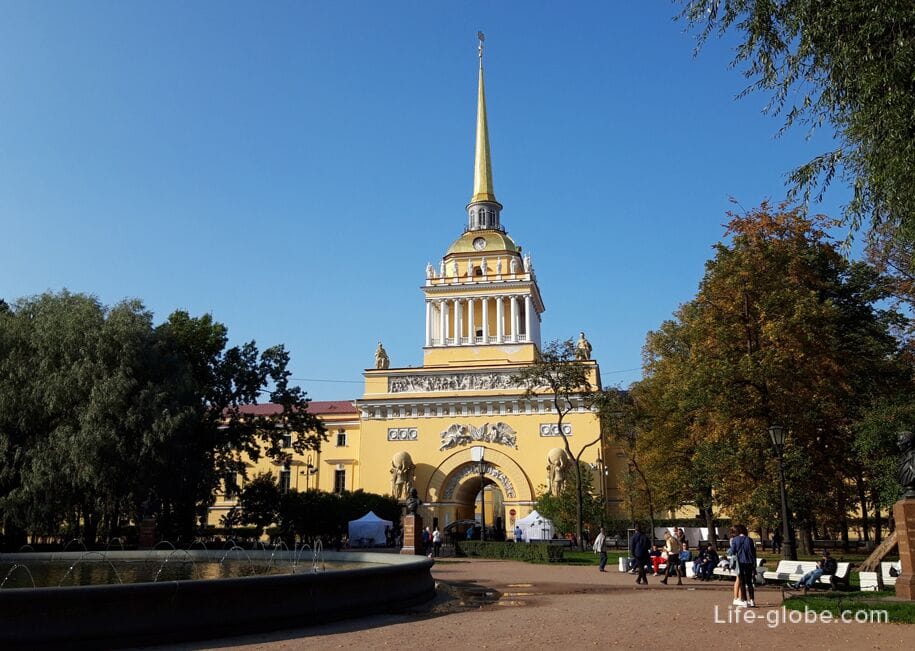
On the west side of the Senate Square are the former buildings of the Senate and the Synod, which today are an architectural ensemble of historical buildings in the style of late classicism.
Initially, the houses of the merchant's wife Kusovnikova and His Serene Highness Prince Menshikov stood on the site of the current buildings.
In 1744, the Menshikov House was granted by Elizabeth I to the Chancellor A. P. Bestuzhev-Ryumin, for whom the building was rebuilt in the Baroque style.
In 1763, after the accession of Catherine II to the throne, the house of Bestuzhev-Ryumin passed to the treasury and the Senate moved to the building. In the 1780s and 1790s, the house was rebuilt in a typical Russian classicism style.
In honor of this building, in 1763, the square received its name - "Senatskaya".
The new buildings of the Senate and Synod were erected between 1829 and 1834 under the direction of architect Alexander Staubert, designed by Karl Rossi.
In the appearance of the complex of buildings, the triumphal arch stands out, which serves as a connection between the two buildings and is thrown over Galernaya Street. The arch has richly decorated stucco decoration, as well as arched windows, columns, and sculptures.
Today, the buildings of the Senate and the Synod are an architectural monument.
The main divisions of the Constitutional Court of the Russian Federation are located in one wing of the building. In the other (the former building of the Synod) - the Presidential Library named after Boris Yeltsin. Learn more about the Senate and Synod buildings…

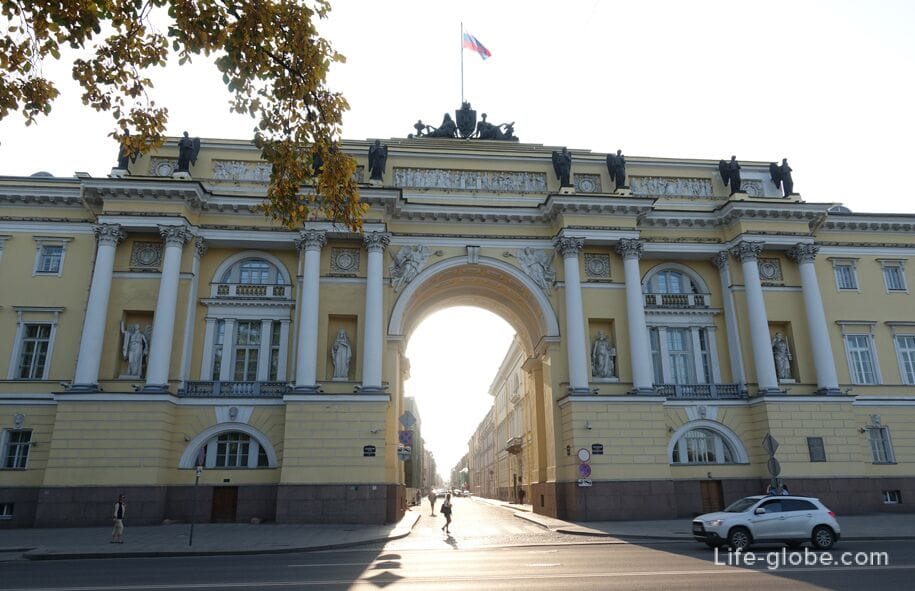
View of the buildings of the Senate and the Synod, as well as the Alexander Garden and the Neva River, from the observation deck of St. Isaac's Cathedral
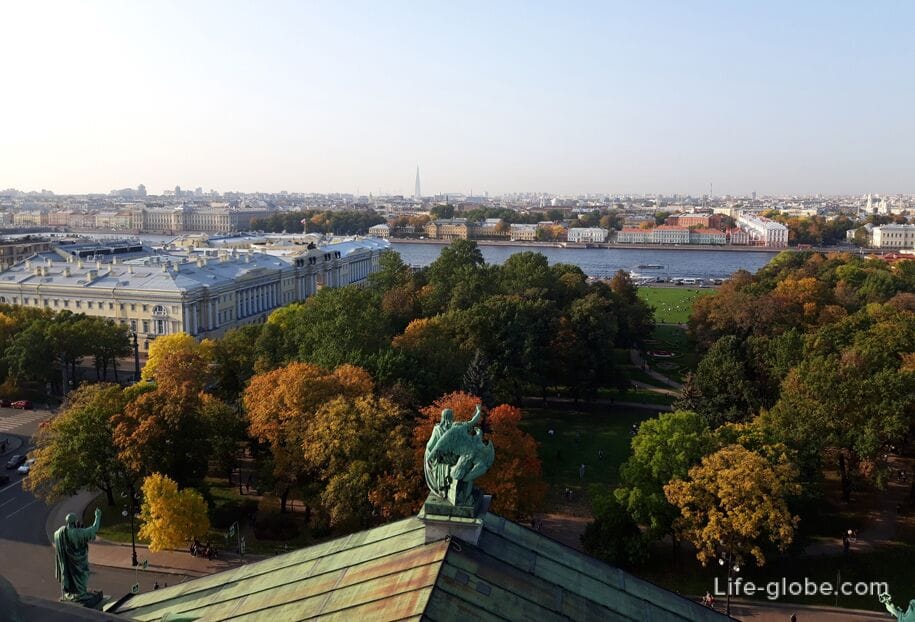
To the south of the buildings of the Senate and the Synod, from the Senate Square originatesKonnogvardeysky Boulevard, which connects the square with Labor Square and the island of New Holland.
From the side of the Senate Square, Konnogvardeysky Boulevard is marked by two tall columns - "Columns of Glory", crowned with winged statues-sculptures of the goddess of victory Nika.
The statues were a gift from King Frederick William IV of Prussia to Nicholas I. Today, the statues of the goddesses are replicas.
The creators of the columns that serve as pedestals for the statues were the sculptor H. D. Rauch and the architect C. I. Rossi.
The columns were opened in 1845.
The height of the columns is 12 meters, including sculptures-2.5 meters. Learn more about Konnogvardeysky Boulevard...

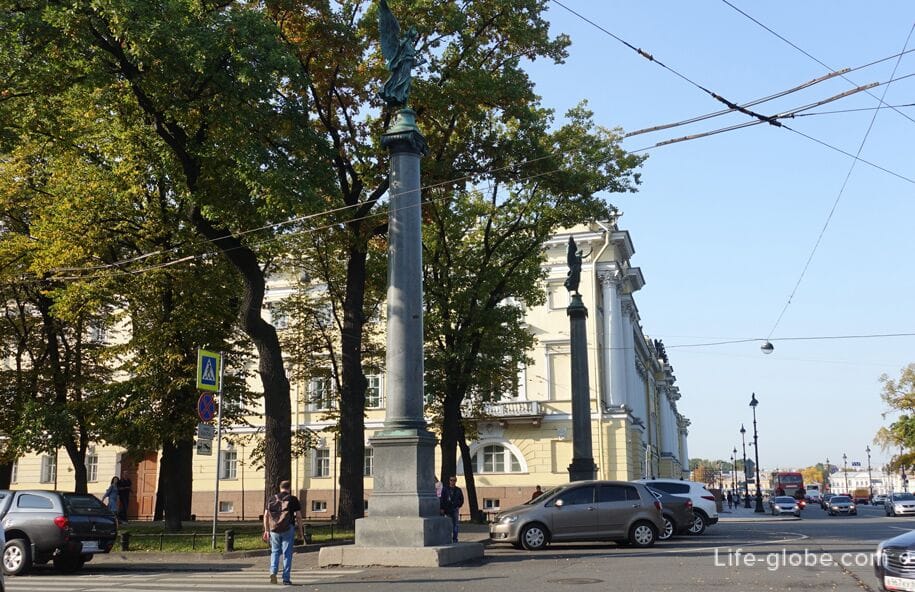
The south-western corner of the Senate Square is decorated with a building in the classical style - Horse Guards Arena, built in 1804-1807 by Giacomo Quarenghi for winter and summer training, as well as ceremonial horse dressage of the Life Guards Horse Regiment.
During its history, the manege was rebuilt several times, including in Soviet times, the building was converted into a garage of the NKVD. During the Great Patriotic War, the building was badly damaged.
Since 1977, the building has been used as an exhibition hall "Manege". For this purpose, the arena was thoroughly restored in accordance with the original plan of Giacomo Quarenghi.
Today, this two-story building is decorated with pilasters with an entablature. The main facade of the arena faces the Senate Square and is decorated with a portico with columns and a triangular pediment.
On both sides of the steps of the arena, on the pedestals there are copies of ancient statues of Dioscuri (in ancient Greek and Roman mythology - the twin brothers Castor and Pollux), taming horses.
The Central Exhibition Hall "Manege" is the largest exhibition space in the center of St. Petersburg. The main activity is the organization of art exhibitions and related events-lectures and master classes, seminars on art and culture, film screenings and concerts.
Website of the exhibition hall "Manege": manege.spb. Address: St. Isaac's Square, 1.

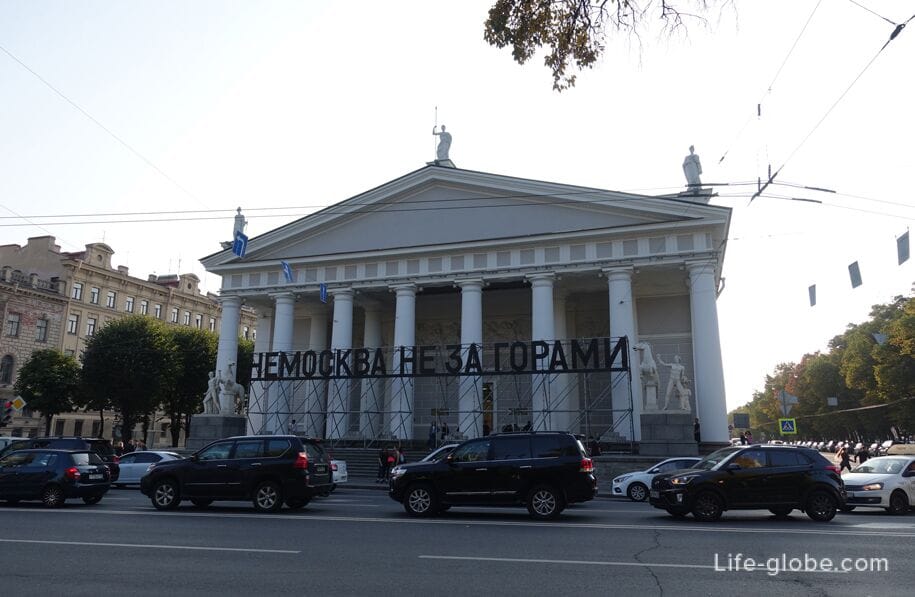
The nearest metro station to Senatskaya Square is Admiralteiskaya.
Also nearby are the stations "Sennaya Ploshchad" and "Nevsky Prospekt".
You can also visit the Senate Square with one of the city tours
Near the Senate Square, which means in the center of St. Petersburg, you can stay
The 5-star Four Seasons Lion Palace Hotelis located in a historic building on the nearby St. Isaac's Square.
The hotelfeatures Russian Empire style interiors, restaurants with exclusive and refined cuisine, a spa and wellness center, a swimming pool, a bar and family rooms.
Each room here will provide you with air conditioning, a flat-screen TV, a DVD player, a minibar, a coffee machine, free Wi-Fi and 2 telephone lines.
The bathrooms feature a deep soaking tub, a separate walk-in shower with rain shower and a flat-screen TV built into the mirror. They are also equipped with free toiletries. Link to the hotel
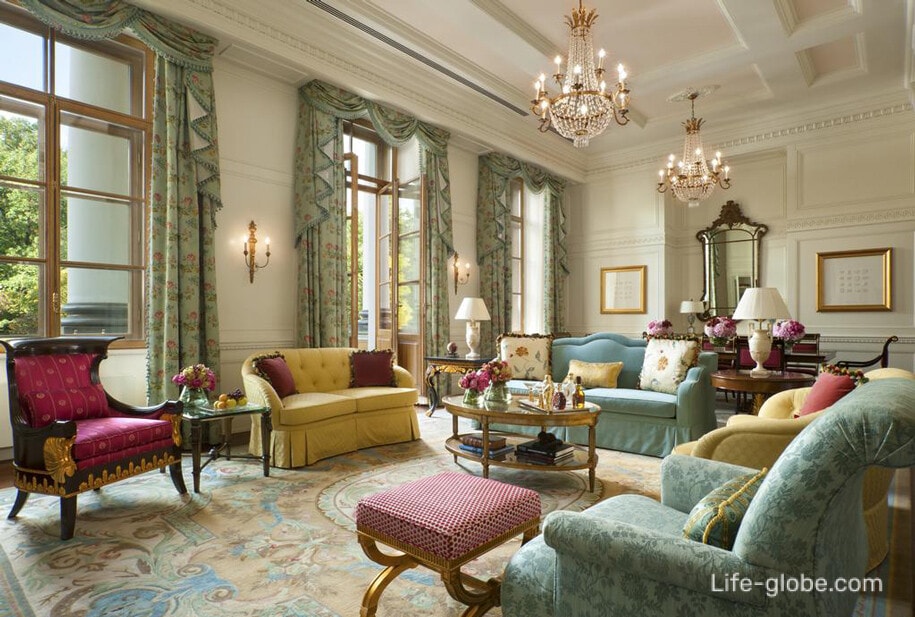
The 5-star SO/ Saint Petersburg Hotel offers views of the sights of Saint Petersburg.
The hotelhas a spa, swimming pool, restaurants, lobby bar, free Wi-Fi and meeting facilities.
Each room here will provide you with air conditioning, a flat-screen TV and an iPod docking station. Link to the hotel
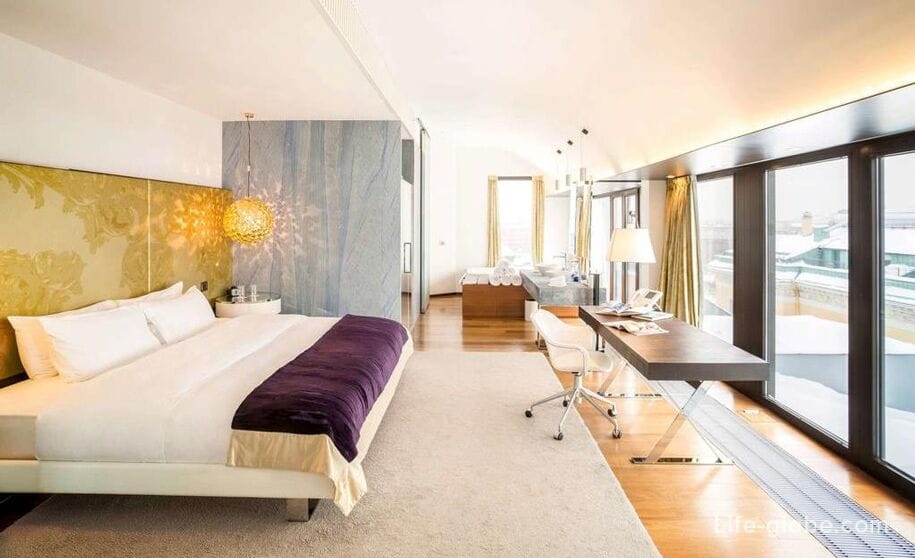
5-star hotel "Astoria", which from the very beginning of construction, at the beginning of the 20th century, was built as a luxury hotel.
Since its opening, the hotel has been popular with influential people and celebrities.
The hotel has a loungewith live music, a restaurant, a bar, free Wi-Fi, an ATM, a swimming pool, a gym, a spa center with a sauna and a Turkish bath.
Each room here will provide you with air conditioning, soundproofing, heating, a work desk, a flat-screen TV, a minibar, a safety deposit box, bathrobes and slippers, and a private bathroom with free toiletries.
A buffet breakfast can be included in the room rate. Link to the hotel
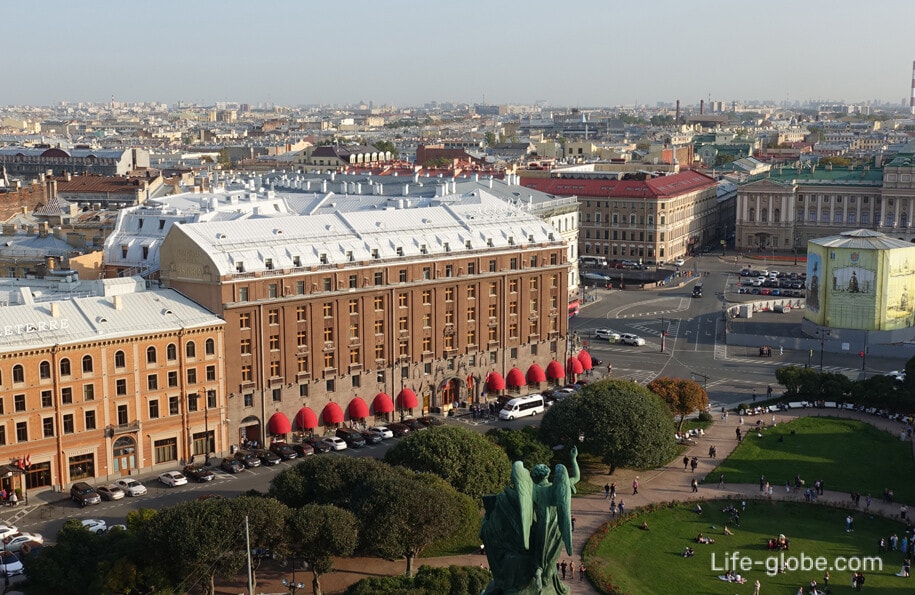
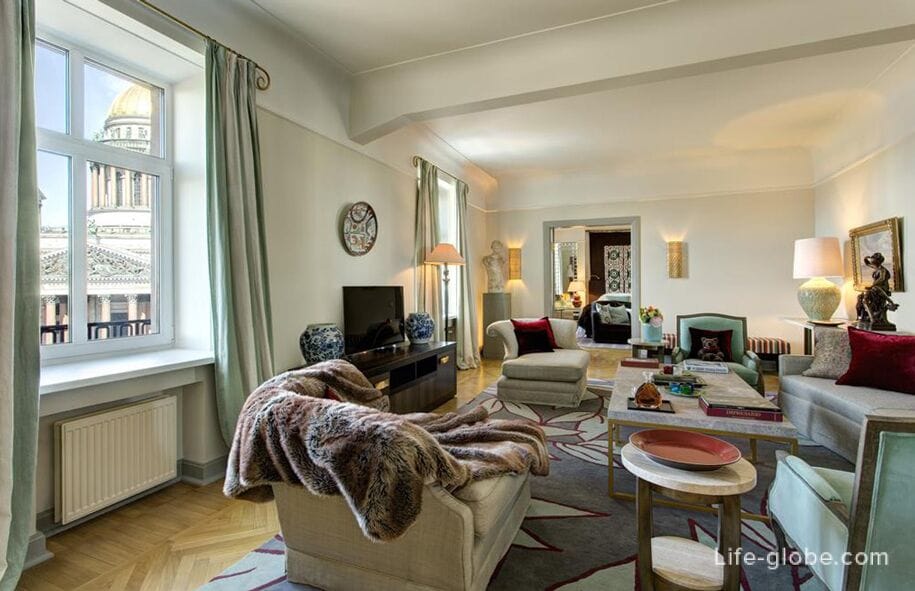
All accommodation facilities in St. Petersburg, including in the city center and near the Senate Square, can be viewed and booked here